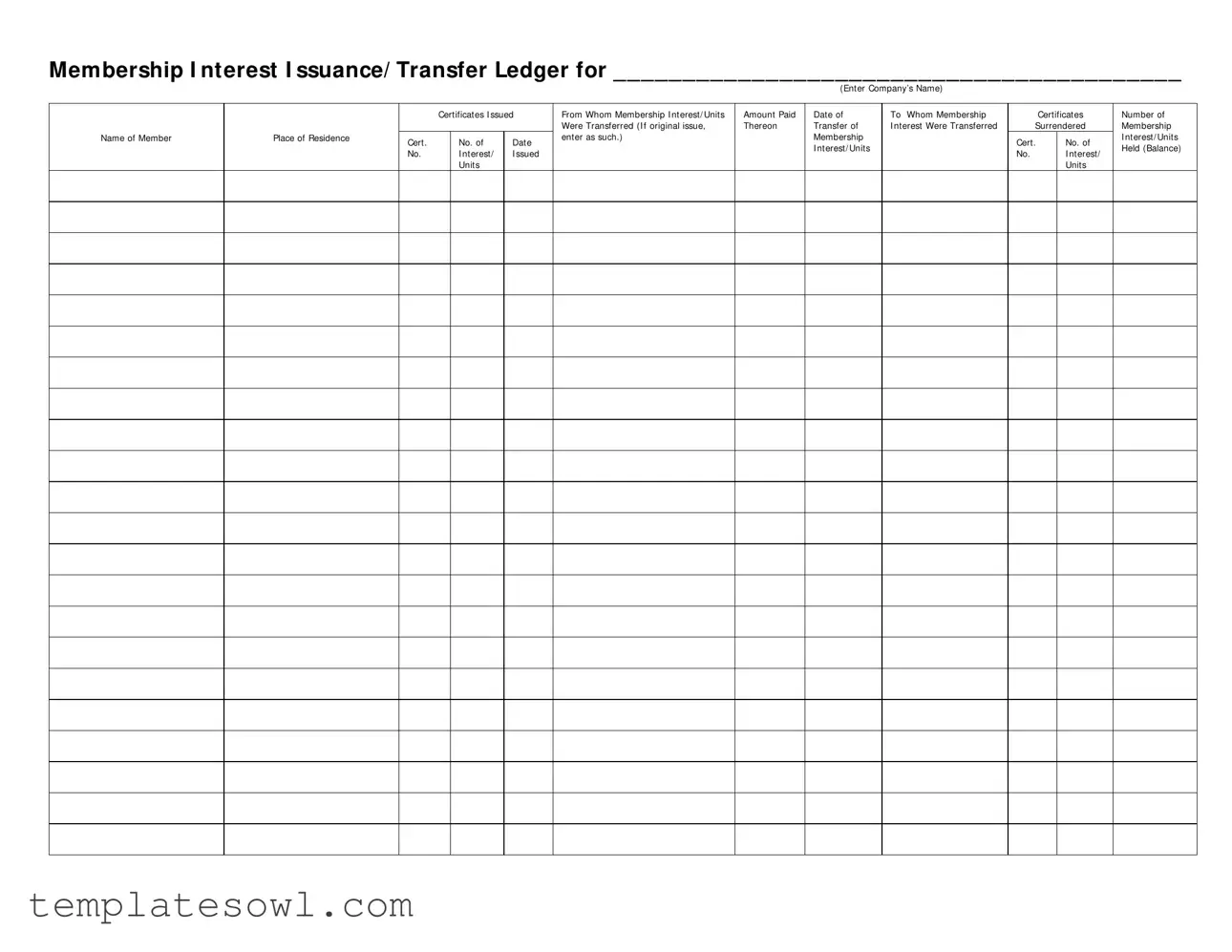What is the Membership Ledger form?
The Membership Ledger form is a document used to track membership interests, including the issuance and transfer of certificates. It records essential details like the member’s name, place of residence, certificate numbers, and the amounts paid for membership interests or units.
Who needs to use the Membership Ledger form?
This form is typically used by companies that issue membership interests or units. It helps maintain clear records for both the organization and its members, ensuring transparency in ownership and transfers.
How do I fill out the Membership Ledger form?
You will start by entering your company’s name at the top. Following that, you need to provide details about each membership interest issued or transferred, including the names of the involved parties, the certificate numbers, amounts, and dates of transactions. It's important to ensure accuracy to avoid any future discrepancies.
What information do I need to provide when transferring membership interests?
When transferring membership interests, you’ll need to include the names of the original and new members, the date of the transfer, the certificate number, and the amount paid, if applicable. These details help establish a clear record of ownership change.
Can I make changes to the Membership Ledger form after it has been completed?
Yes, you can make changes, but it's critical to keep a clear audit trail. Any corrections should be noted with the date of the change and the person making the change. This helps maintain transparency and ensures that all modifications are documented properly.
Why is it important to maintain an accurate Membership Ledger?
Maintaining an accurate Membership Ledger is vital for legal compliance and organizational integrity. It protects the interests of both the company and its members by providing a clear record of ownership and any changes that occur over time.
How long should I keep the Membership Ledger on file?
It’s a good practice to keep the Membership Ledger for at least seven years. This timeframe aligns with general record-keeping recommendations, ensuring you have documentation readily available if needed for audits or member inquiries.
What happens if I lose the Membership Ledger form?
If you lose the Membership Ledger form, you should attempt to recreate it from any available copies or records. If necessary, consult with legal professionals to ensure that you comply with local laws regarding record-keeping and to understand how to rebuild a lost ledger.
Is the Membership Ledger form a public document?
The Membership Ledger is typically not a public document. It is generally kept confidential and only shared with authorized personnel or stakeholders who have a legitimate interest in the company's membership records.

